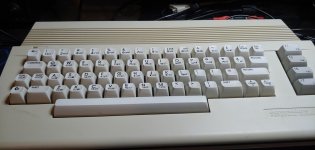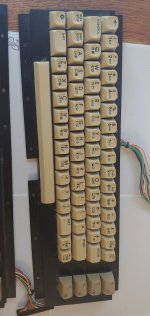Retrobrighting, or leaving stuff out in the sun to bleach, not only delays the inevitable but makes the plastic more brittle.
I had a recent discussion about this with an old high school classmate who works professionally in a chemistry field. I didn't understand the styrene-acrylonitrile copolymer details that much, although I think I understand that SAN is the "yellow" component, and it is bonded with polybutadiene chains to make a better plastic because each on their own isn't as useful a substance. The crux of the discussion was this: Retrobrite/sunbrite practices (heat, light) expose the plastic to free radicals to un-bind SAN from PB. When SAN goes away, so does the yellow color -- but now you're left with only PB, which is weaker and more brittle without SAN. Not only will yellowing come back as new SAN that is now exposed start yellowing, but constant repeating of the process means you've removed the element from the plastic that binded with PB to make it stronger. So eventually, you'll get permanent yellowing *and* brittle plastic.
When I asked her if there was anything that could be done, her advice was "not really" and suggested painting the plastic, as paint is easier to maintain. :-(
We all desperately want a process to un-yellow plastic, but our choices are essentially these:
- retrobright every 3-5 years, until the plastic crumbles or shatters (hope you have lots of spares)
- paint the exterior of the pieces
- purchase NIB items and keep them out of heat and light until the time comes to exhibit them
In my personal opinion, leaving stuff outside to bleach in the sun is one of the worst things we should be doing. Depending on the type of plastic and additives, you could actually accelerate the yellowing process instead of "reversing" it.


